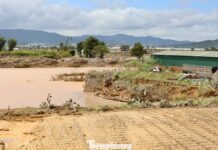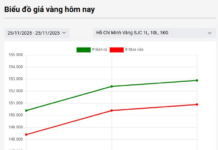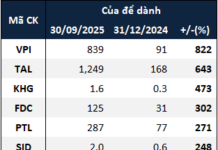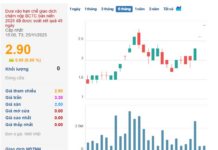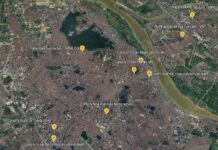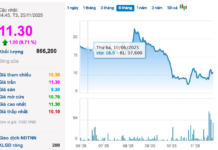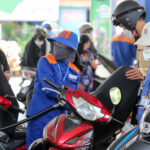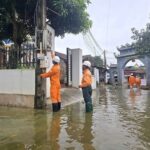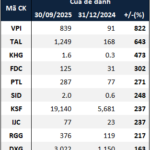From the early hours of October 10th, long queues formed at a gas station on Phan Dinh Phung Street in Thai Nguyen province. Many households brought large plastic containers, some carrying multiple cans at once, waiting to purchase fuel.
According to locals, the rush to buy gasoline is to ensure sufficient fuel for generators, maintaining daily activities during prolonged power outages. Additionally, after the flood, mud and debris filled homes, requiring water pumps to clear the mess and rearrange belongings, making the demand for fuel more critical than ever.
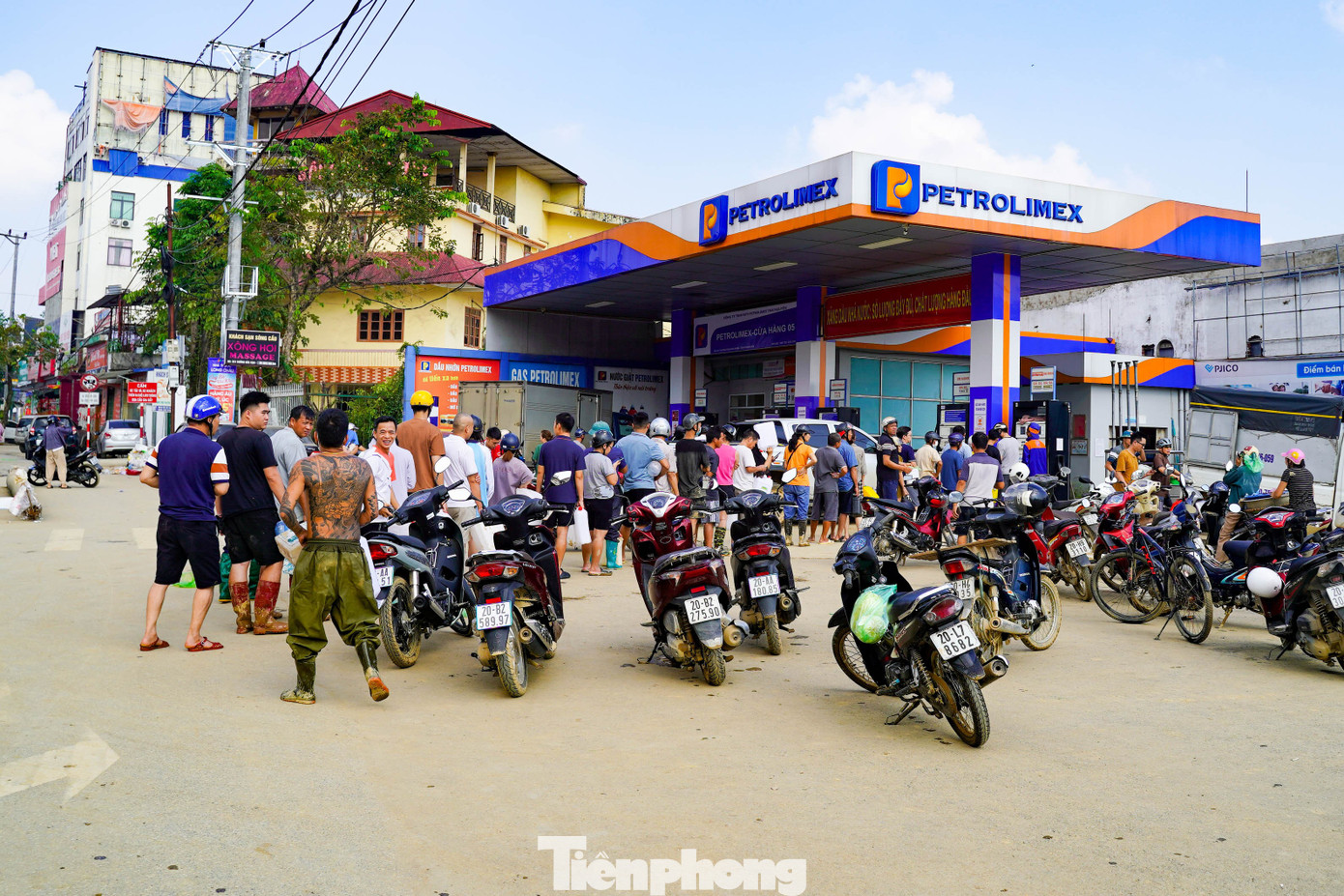
Long queues at the gas station on Phan Dinh Phung Street, Thai Nguyen City.
Mr. Nguyen Trong Anh from Trai Cau, Thai Nguyen province, shared that his house and family woodworking workshop were severely flooded after the storm, with water levels reaching up to 2.5 meters, submerging the entire first floor. Over the past four days, the area has been completely without power, making daily life and recovery efforts extremely challenging.
“Most of the wood in my workshop was washed away or severely damaged. Today, I need to use a generator to power fans, water pumps, and clean up, but the nearby gas station is closed, so I had to come here to buy fuel,” Mr. Anh said, his voice filled with fatigue and worry. His eyes revealed sadness as he spoke of the damaged wood and production tools, along with the significant financial burden caused by the flood.
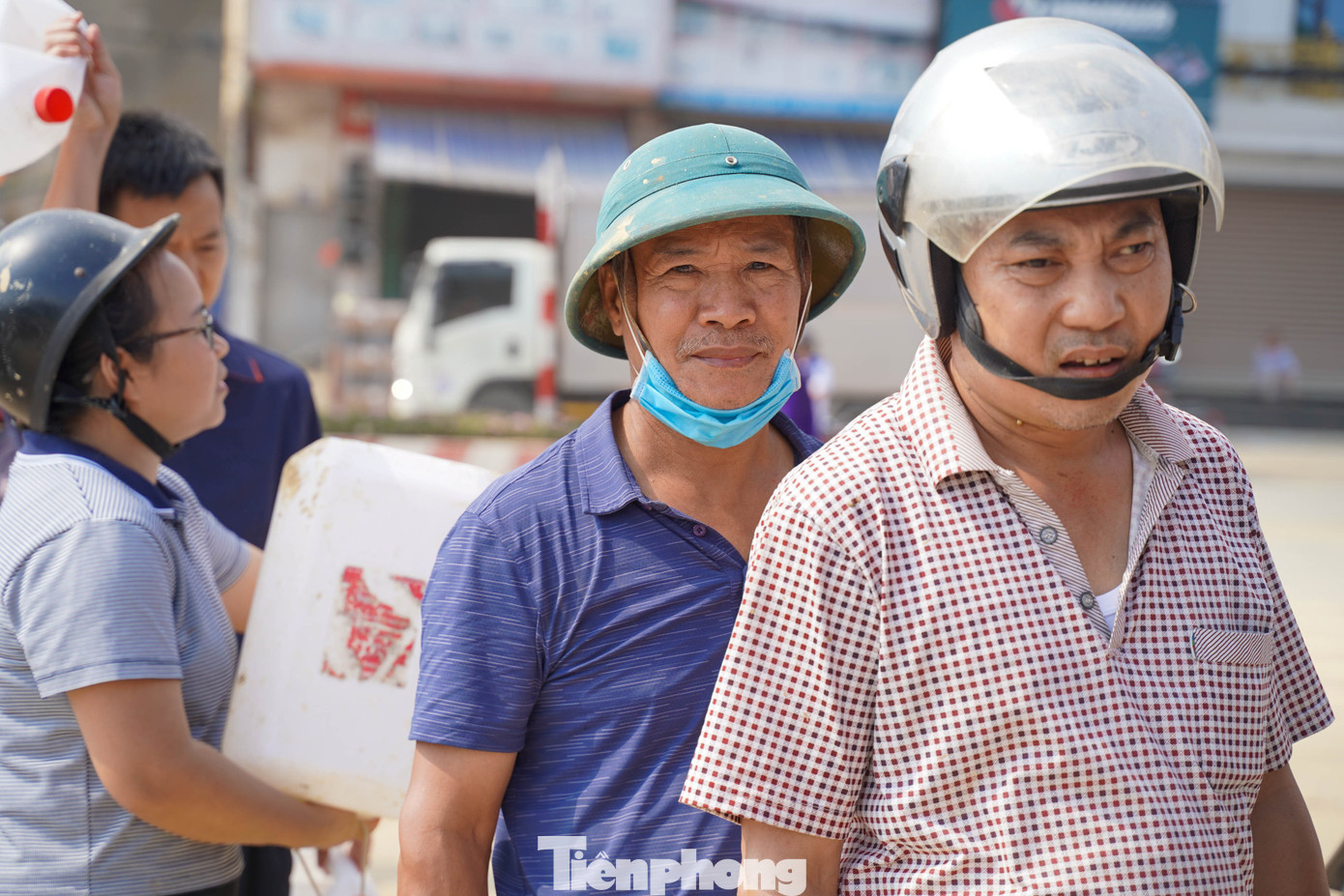
Mr. Anh (in a conical hat) waiting in line to buy gasoline.
Like Mr. Anh, many residents are busy clearing mud and wet belongings. Across the streets near the gas station, people hurriedly lined up with plastic containers, worried about cleaning their homes and maintaining daily life during the extended power outage. This scene vividly illustrates the struggles of Thai Nguyen residents post-flood.
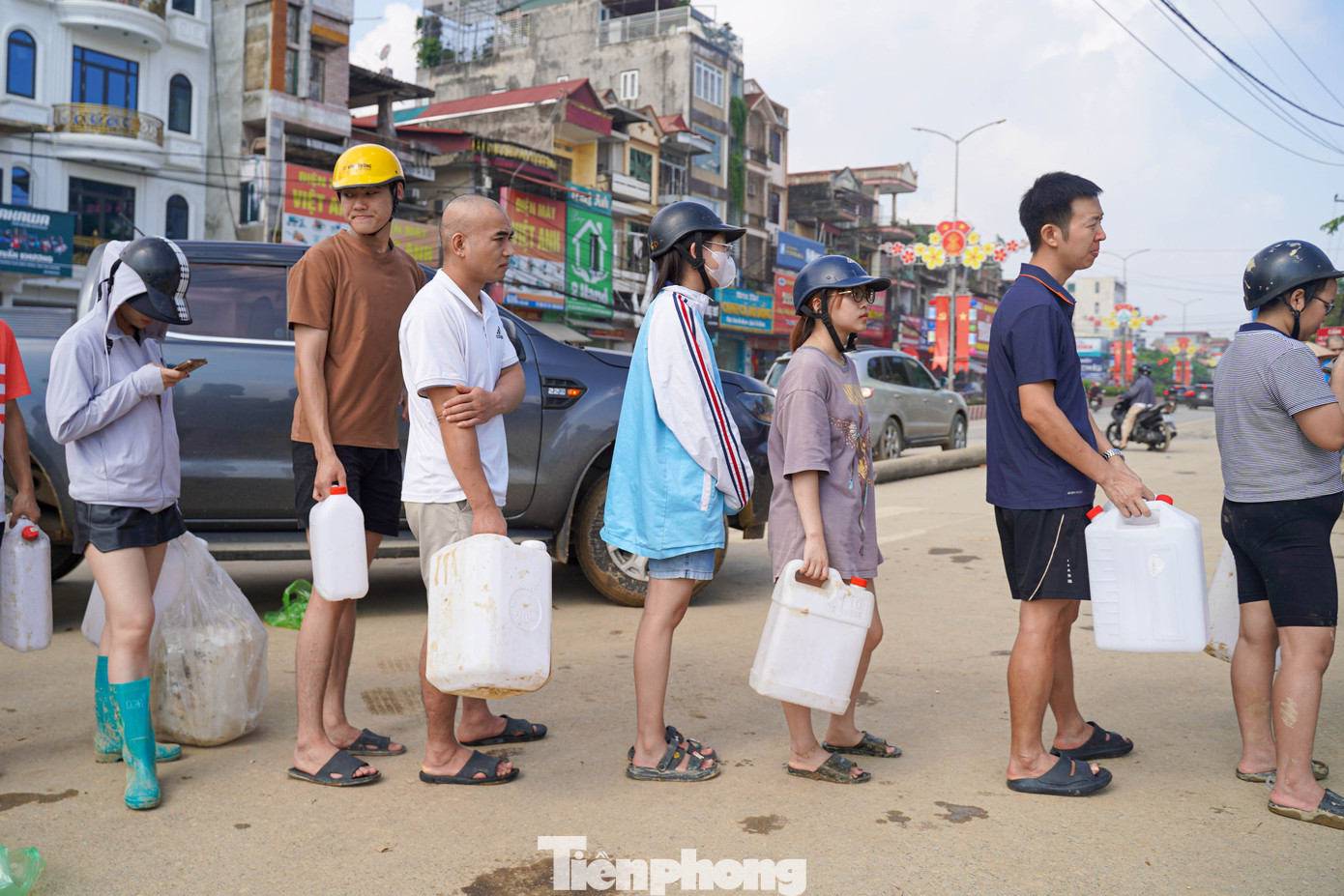
Each person holds a plastic container, patiently waiting their turn to buy gasoline.
Mr. Dao Manh Khai from Tuc Duyen, Thai Nguyen, has been waiting in line since early morning with several large containers, aiming to buy as much gasoline as possible to power generators for daily activities and operate water pumps to clear mud from his flooded home.
Mr. Khai shared that the floodwaters submerged the entire first floor, causing his car to stall and severe damage to his belongings.
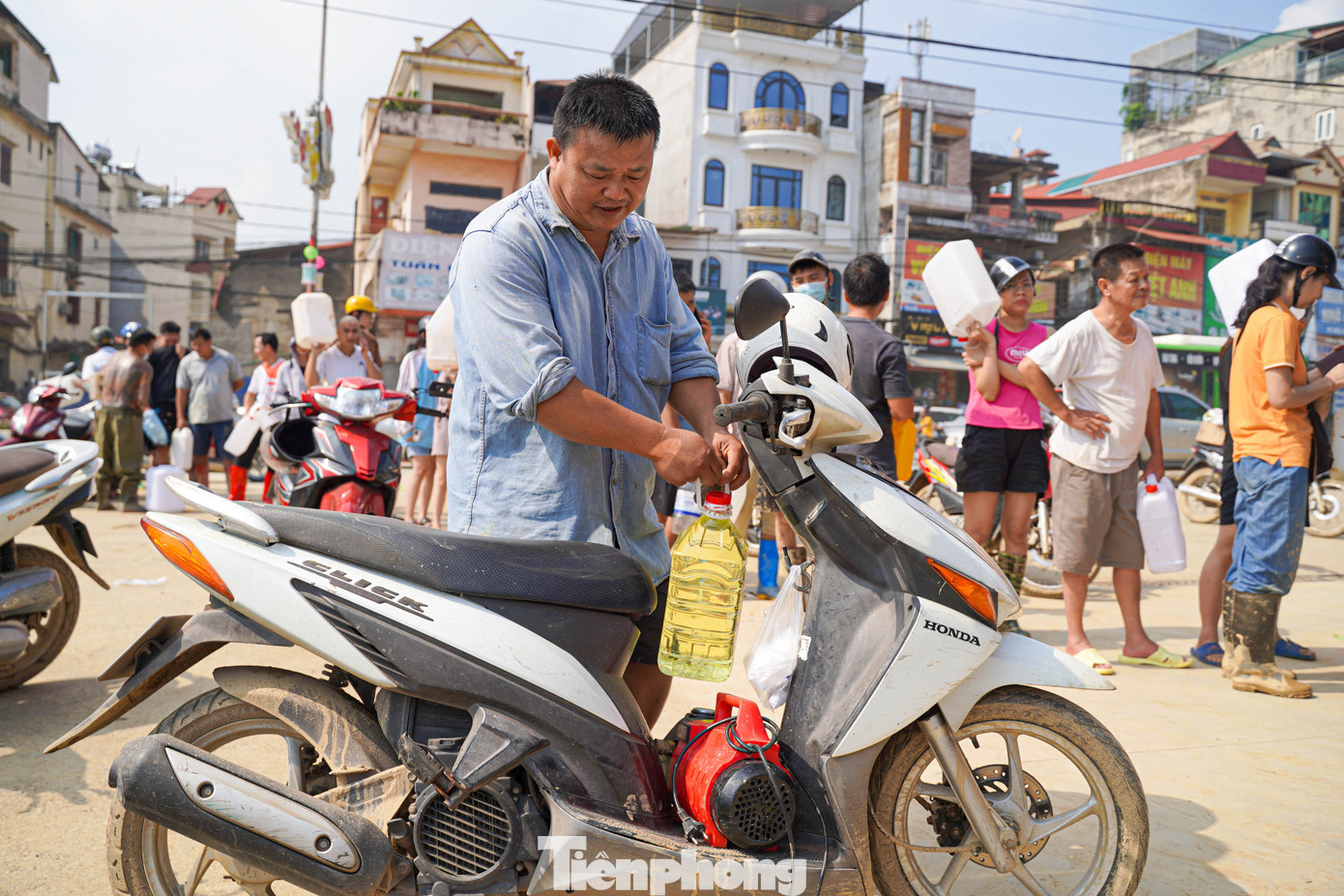
Mr. Khai buying gasoline, with a water pump placed under his car, ready to take home.
“My house was deeply flooded, and as the water receded, my car and belongings were damaged. For the past two days, I’ve been wearing the same clothes because everything else is wet. Without gasoline, I can’t run the generator to pump water, clean up the mud, or organize my belongings. Every container of gasoline is as precious as gold right now,” Mr. Khai said, his voice heavy with exhaustion and concern.
He noted that in recent days, buying gasoline has become a top priority, as a lack of fuel would halt all cleanup and recovery efforts, making life even more difficult.
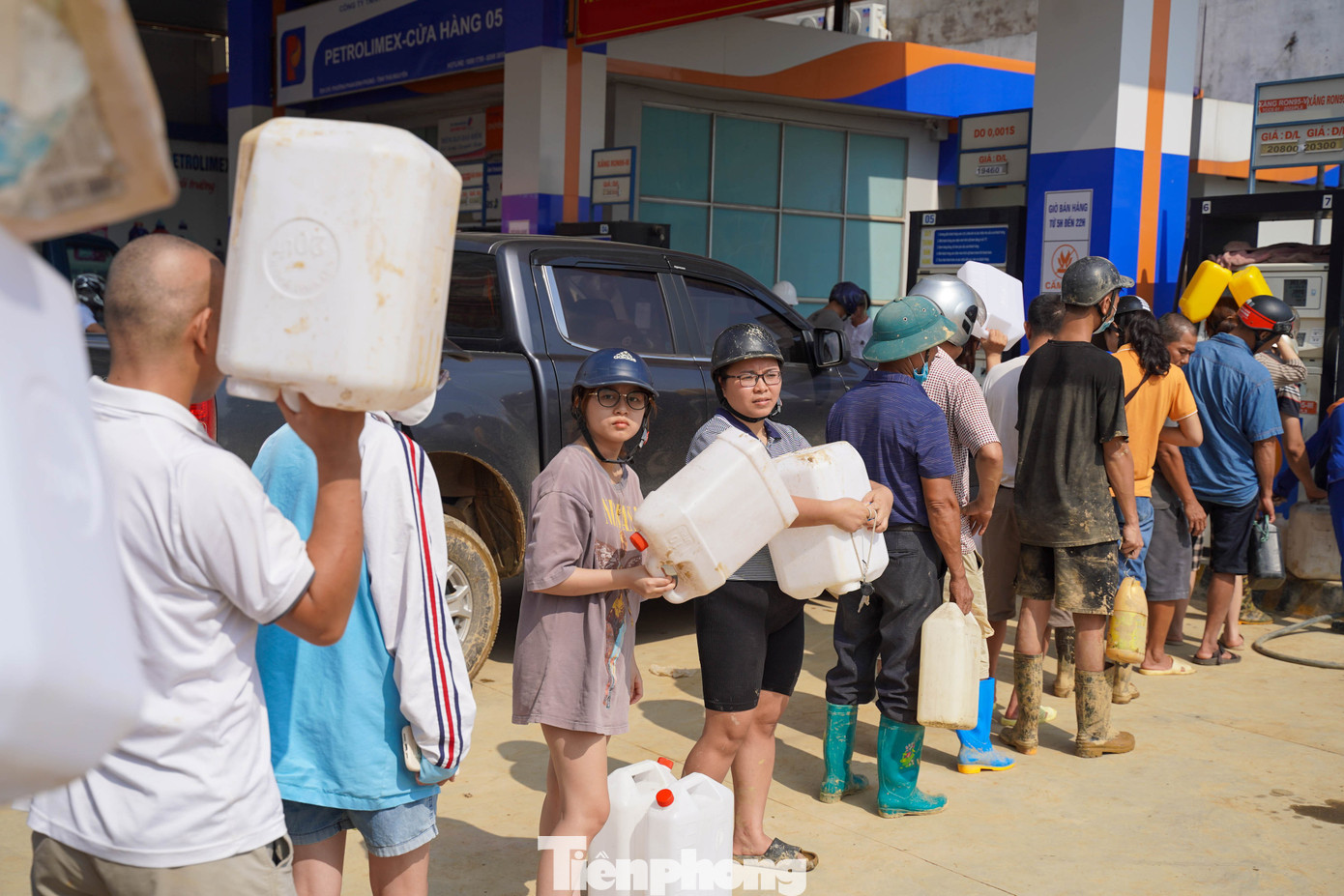
Many people lining up to buy gasoline.
After days of battling mud, floodwaters, and power outages, the people of Thai Nguyen remain resilient, actively finding ways to maintain daily life, clean their homes, and restore normalcy. The scenes of long queues at gas stations, running generators, and tirelessly cleaning up mud not only reflect current challenges but also demonstrate the community’s spirit of perseverance, solidarity, and collective effort in the aftermath of the flood.
According to Thai Nguyen Power Company, as of 3 PM on October 9th, 30 line segments were still faulty, and 386 substations in flooded areas had to be shut down, affecting over 61,000 customers. The company has not yet determined when power will be restored to deeply flooded and isolated areas. The power sector is mobilizing maximum resources to repair the damage and restore electricity as soon as possible, stabilizing life and production for residents.
Chairman of Hanoi Demands Continuous Updates on Flood-Prone ‘Hotspots’
The Chairman of the Hanoi People’s Committee has directed relevant departments to ensure seamless and continuous communication regarding the overall situation, developments, and resolution outcomes of critical flooding hotspots. This initiative aims to comprehensively lead and manage disaster response and recovery efforts across the city.


